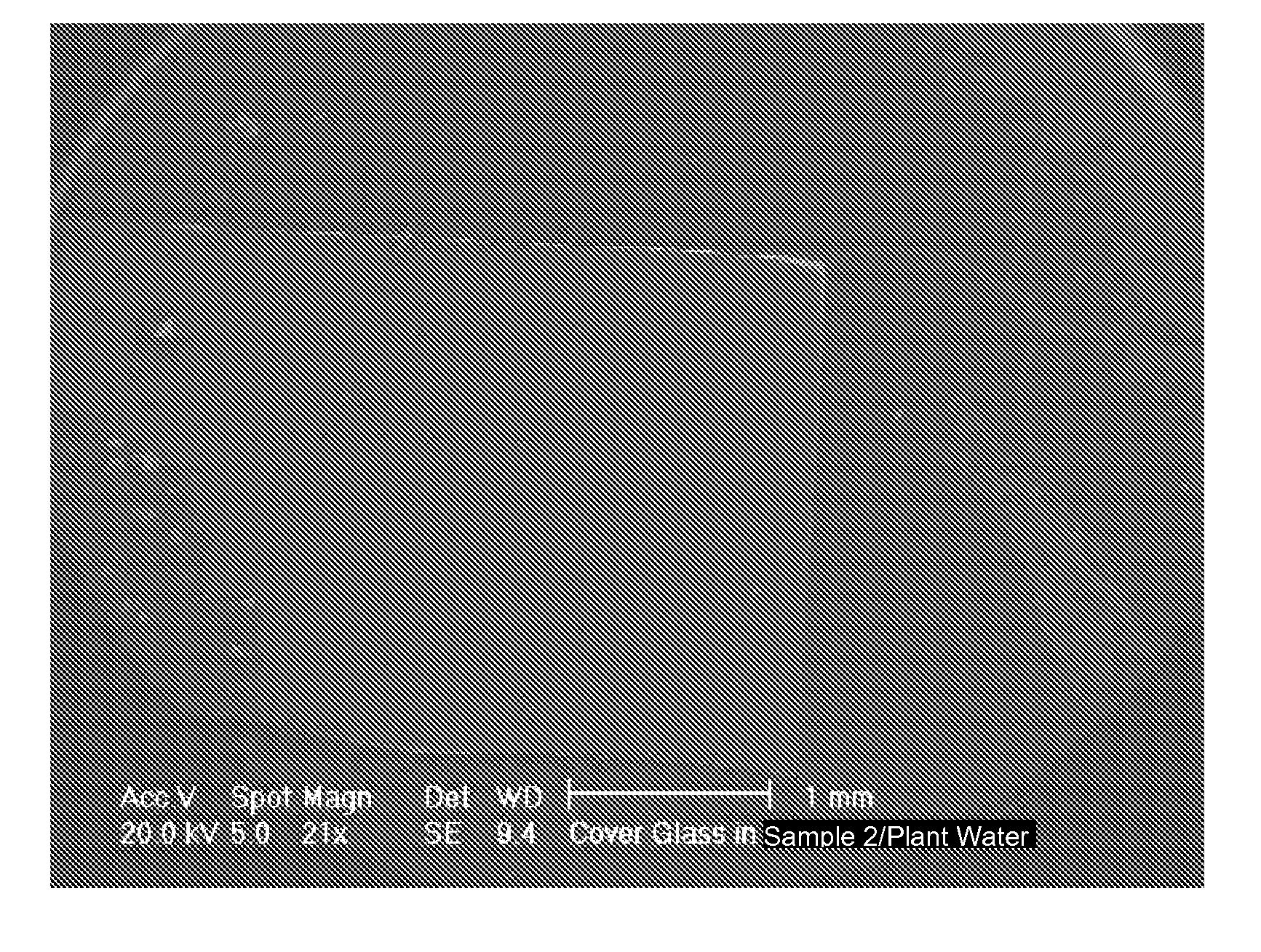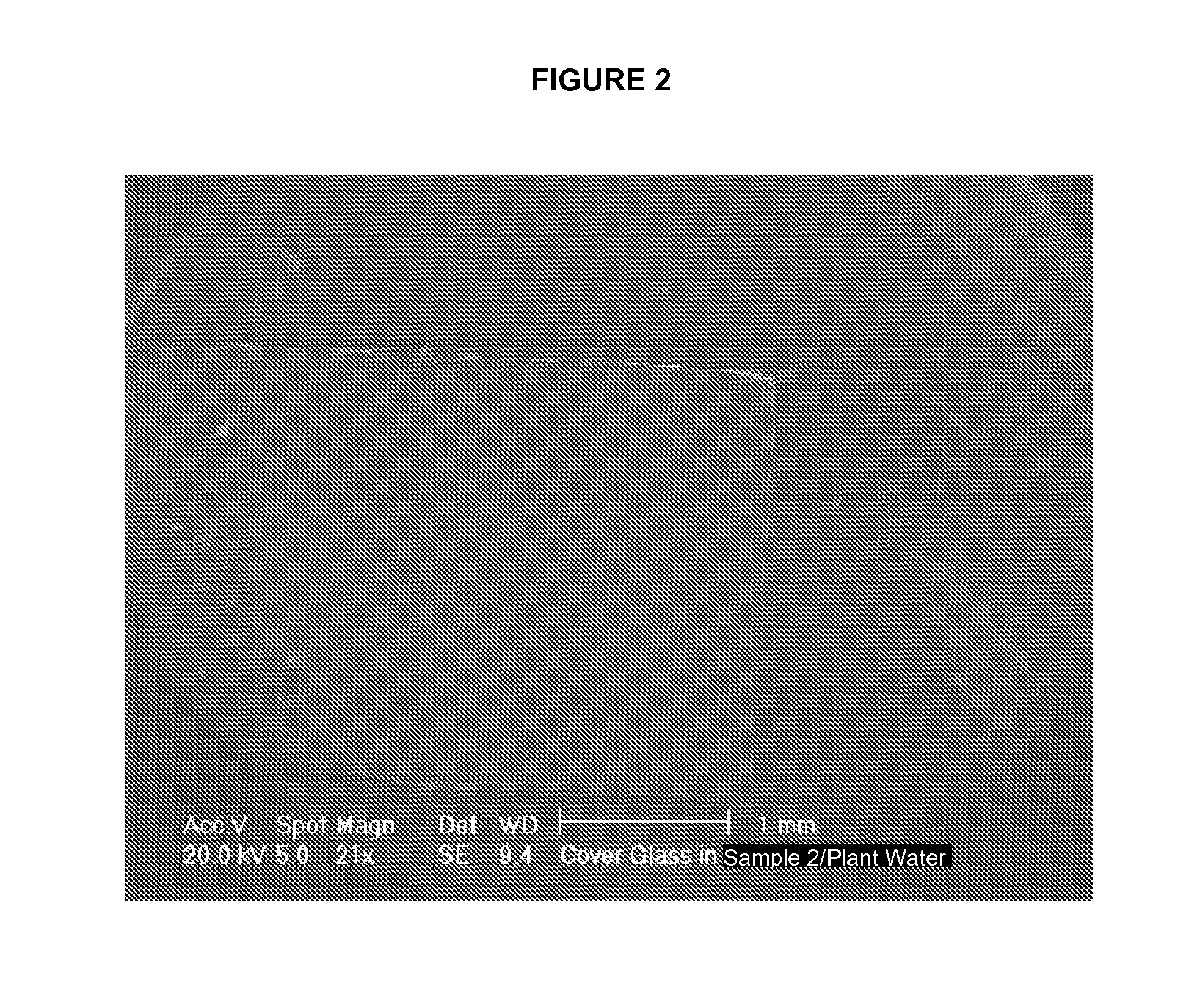Methods for prevention and reduction of scale formation
a technology of scale formation and reduction, applied in the direction of lighting and heating equipment, separation processes, water treatment, etc., can solve the problems of increasing utility costs, reducing heat exchange capacity, and affecting preventing or reducing scale formation or corrosion, and reducing the effect of scale formation or corrosion
- Summary
- Abstract
- Description
- Claims
- Application Information
AI Technical Summary
Benefits of technology
Problems solved by technology
Method used
Image
Examples
example 1
[0075]Carbonate and sulfate scales were identified and collected in the heat exchangers of a silicate plant involved in the production of synthetic silicates, in which a conventional organo-phosphate anti-scalant had been added to hard water in an effort to reduce scale formation. The scales were of mixed crystal types and displayed intergrowth scale phases, as found in the internal slurry flow pipes of the exchangers. Sulfate scales were more prevalent toward the hot end of the exchangers, while carbonate scales were more prevalent toward the cool ends. Scale samples were analyzed by X-ray fluorescence (XRF) to determine their composition, and the scale phase was determined by X-ray diffraction (XRD) analysis. The compositions and phase of carbonate and sulfate scale samples from the silicate plant heat exchangers are listed in Table 1.
TABLE 1CarbonateSulfateCompound %ScaleScaleCaO66.428.81SO310.0151.10SiO210.2310.01MgO10.917.32Al2O30.471.28Fe2O30.320.37P2O51.541.04Na2O0.050.02Tota...
example 2
[0082]When naturally hard plant water is heated and vaporized, it becomes oversaturated with the salts it contains, usually calcium and magnesium salts, such as CaCO3 and MgCO3. Scale crystals can grow on the inside walls of the container used to boil the water. Natural hard water having a pH of 6.9 and conductivity of 1.20 mS / cm (equivalent to about 600 ppm dissolved solids) was used to study the anti-scaling properties of various powdered materials. The materials tested included those shown in Table 3.
TABLE 3SampleComposition1DE-derived synthetic calcium silicate(CaO / SiO2 molar ratio ≈1.50)BET Surface Area = 105 m2 / g2DE-derived synthetic calcium silicate(CaO / SiO2 molar ratio ≈0.42)Median (d50) Particle Size = 18.0 μm (CILAS granulometer)BET Surface Area = 120 m2 / g3DE-derived synthetic calcium silicate(CaO / SiO2 molar ratio ≈0.58)Median (d50) Particle Size = 18.0 μm (CILAS granulometer)BET Surface Area = 165 m2 / g4Precipitated silica-derived synthetic calcium silicate(CaO / SiO2 molar ...
example 3
[0087]Varying amounts of Sample 2 and Sample 4 combined with natural hard water did not result in the formation of scale. Table 5 shows the results of experiments carried out in accordance with Example 2, in which the listed amounts of water were loaded with the listed amounts of Sample 2 or Sample 4, the listed amount of water was evaporated, and the amount of scaling was determined. Sample 2 prevented scale formation when added to the natural hard water at the low concentration of 0.05 g / L. SEM showed that the scale crystals were adsorbed to the Sample 2 particles (FIG. 8).
TABLE 5Water VolumeLoadingEvaporatedScalingSample ID(ml)(g)water (ml)(%)*Plant Water1000NA900100Sample 210000.59000Sample 210000.29000Sample 220000.518000Sample 220000.2518000Sample 210000.059000Sample 410000.59000Sample 410000.29000
PUM
| Property | Measurement | Unit |
|---|---|---|
| particle size | aaaaa | aaaaa |
| BET specific surface area | aaaaa | aaaaa |
| particle size | aaaaa | aaaaa |
Abstract
Description
Claims
Application Information
 Login to View More
Login to View More - R&D
- Intellectual Property
- Life Sciences
- Materials
- Tech Scout
- Unparalleled Data Quality
- Higher Quality Content
- 60% Fewer Hallucinations
Browse by: Latest US Patents, China's latest patents, Technical Efficacy Thesaurus, Application Domain, Technology Topic, Popular Technical Reports.
© 2025 PatSnap. All rights reserved.Legal|Privacy policy|Modern Slavery Act Transparency Statement|Sitemap|About US| Contact US: help@patsnap.com



